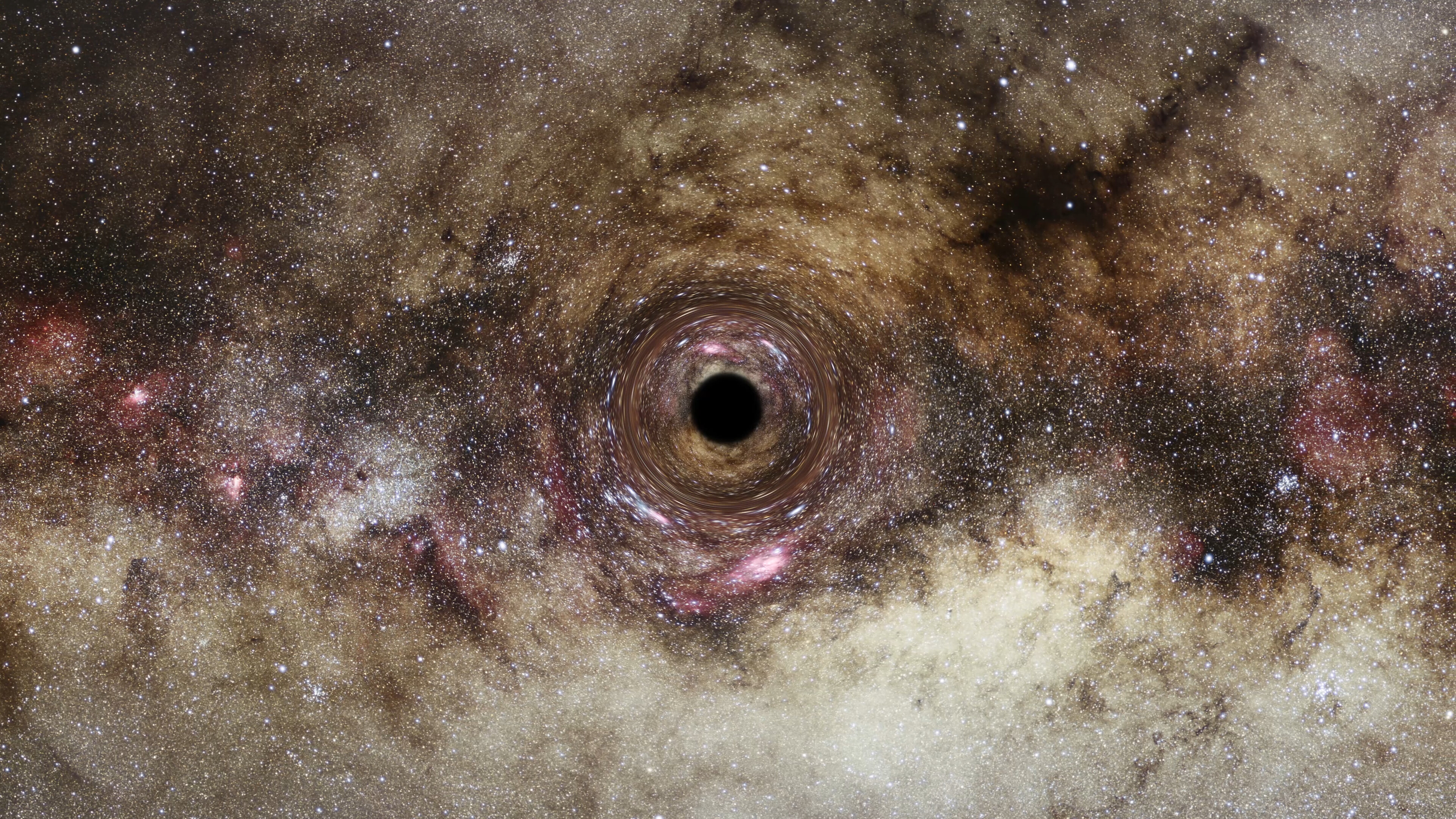
Astronomers have discovered one of the largest black holes ever found — an ultramassive monster roughly 30 billion times the mass of the sun — using a space-time trick predicted by Albert Einstein.
The colossal black hole, which lurks 2.7 billion light-years from Earth in the brightest galaxy of the galaxy cluster Abell 1201, was given away by a giant arc of warped light from a background galaxy that had been stretched and smudged by the black hole's immense gravitational field.
The cosmic monster exists "on the upper limit of how large we believe black holes can theoretically become," the astronomers who detected it said in a statement. But it could only be the first of many cosmic behemoths that the team could spot across the night sky using this technique. Finding the ultramassive black holes is just the first step in figuring out how these beasts grow so large, the researchers wrote in a paper published March 28 in the journal Monthly Notices of the Royal Astronomical Society.
Einstein's theory of general relativity describes how massive objects warp the fabric of space-time. Einstein explained that gravity isn't produced by an unseen force but is simply our experience of space-time curving and distorting in the presence of matter and energy.
This curved space, in turn, sets the rules for how energy and matter move. According to one of general relativity's most famous predictions, light traveling through an extremely curved region of space-time travels, perhaps unsurprisingly, in a curve — warping and twisting through a gigantic funhouse mirror until it emerges as a stretched-out arc called an Einstein ring. Astronomers can use this effect, known as gravitational lensing, to detect faint celestial objects that might not otherwise be seen.
"Most of the biggest black holes that we know about are in an active state, where matter pulled in close to the black hole heats up and releases energy in the form of light, X-rays, and other radiation," study author James Nightingale, an astrophysicist at Durham University in the U.K., said in the statement. "However, gravitational lensing makes it possible to study inactive black holes [which are not feeding and therefore produce no light], something not currently possible in distant galaxies."
Once they had spotted the arc of warped light around the inactive black hole, the researchers used the information about how it had stretched light to reconstruct the size of the black hole. Taking high-resolution images with the Hubble Space Telescope and plugging measurements from them into the DiRAC COSMA8 supercomputer, the researchers simulated how massive the black hole would need to be to bend light to the extent it had.
They discovered that the behemoth was a whopping 30 billion solar masses, making it around 8,000 times bigger than the supermassive black hole at the center of the Milky Way. The biggest black hole ever found is TON 618, which is roughly 40 billion solar masses.
Studying more massive black holes in this way could help scientists understand how these cosmic giants grew to such improbable sizes, as well as investigate how these monsters affect the evolution of the universe.
"This approach could let us detect many more black holes beyond our local universe and reveal how these exotic objects evolved further back in cosmic time," Nightingale said.







